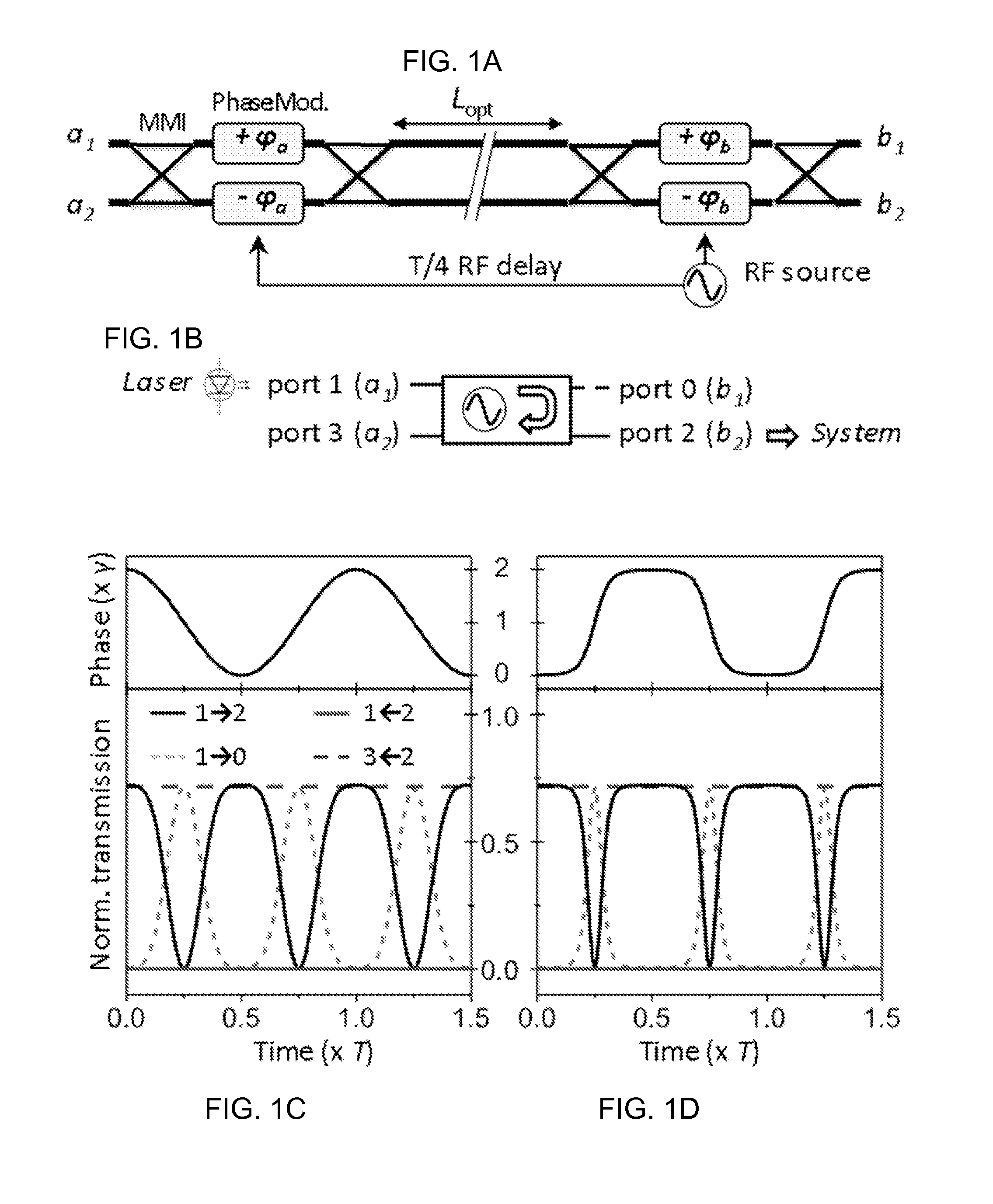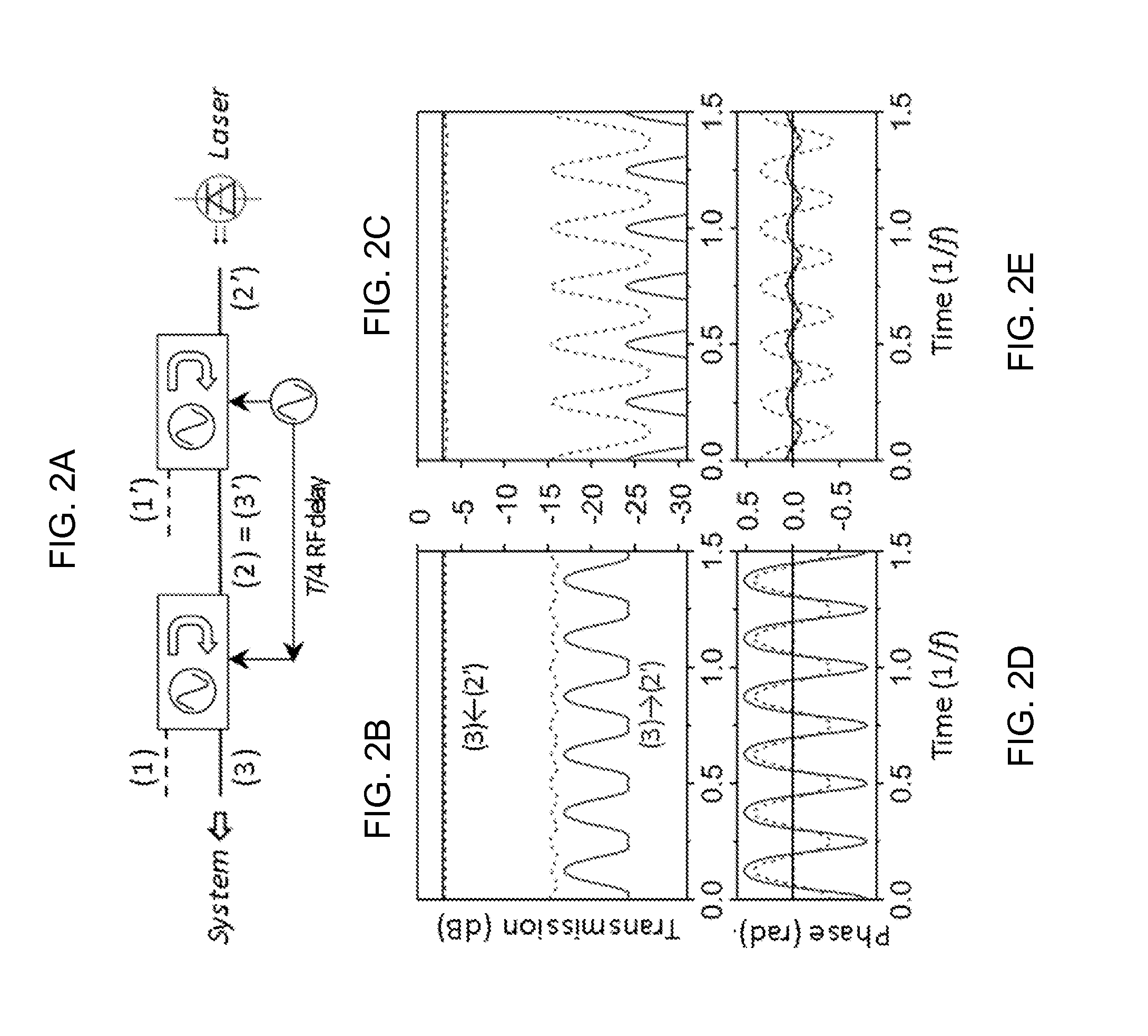Broadband optical isolator using phase modulators and mach-zehnder interferometers
a phase modulator and optical isolator technology, applied in the field of optical isolators, can solve the problems of high manufacturing complexity, inability to manufacture magneto-optic materials using large-scale integrated circuit production techniques, and difficulty in integrating into chip-scale planar photonic circuits, so as to reduce the insertion loss and the achievable footprint, the effect of high operation frequency
- Summary
- Abstract
- Description
- Claims
- Application Information
AI Technical Summary
Benefits of technology
Problems solved by technology
Method used
Image
Examples
Embodiment Construction
[0047]We describe a new non-reciprocal photonic circuit operating with standard singlemode waveguides or fibers. The non-reciprocal photonic circuit can be fabricated in processes compatible with the existing complementary metal-oxide-semiconductor (CMOS) infrastructure. The non-reciprocal photonic circuit exploits a time-dependent index modulation obtained with conventional phase modulators such as the one widely available in silicon photonics platforms. Because it is based on fully balanced interferometers and does not involve resonant structures, the non-reciprocal photonic circuit is also intrinsically broadband. Using realistic parameters we calculate an extinction ratio superior to 20 dB and insertion loss below −5 dB.
[0048]FIG. 1A is an illustration of a single module of the invention functioning as a nonreciprocal modulator, as it can be implemented in a PIC.
[0049]FIG. 1B is a schematic illustration of the input and output relations for the nonreciprocal modulator of FIG. 1A...
PUM
| Property | Measurement | Unit |
|---|---|---|
| insertion loss | aaaaa | aaaaa |
| insertion loss | aaaaa | aaaaa |
| insertion loss | aaaaa | aaaaa |
Abstract
Description
Claims
Application Information
 Login to View More
Login to View More - R&D
- Intellectual Property
- Life Sciences
- Materials
- Tech Scout
- Unparalleled Data Quality
- Higher Quality Content
- 60% Fewer Hallucinations
Browse by: Latest US Patents, China's latest patents, Technical Efficacy Thesaurus, Application Domain, Technology Topic, Popular Technical Reports.
© 2025 PatSnap. All rights reserved.Legal|Privacy policy|Modern Slavery Act Transparency Statement|Sitemap|About US| Contact US: help@patsnap.com



